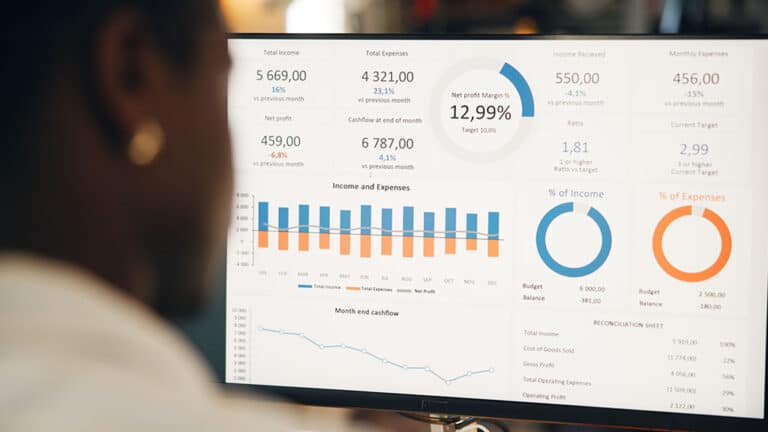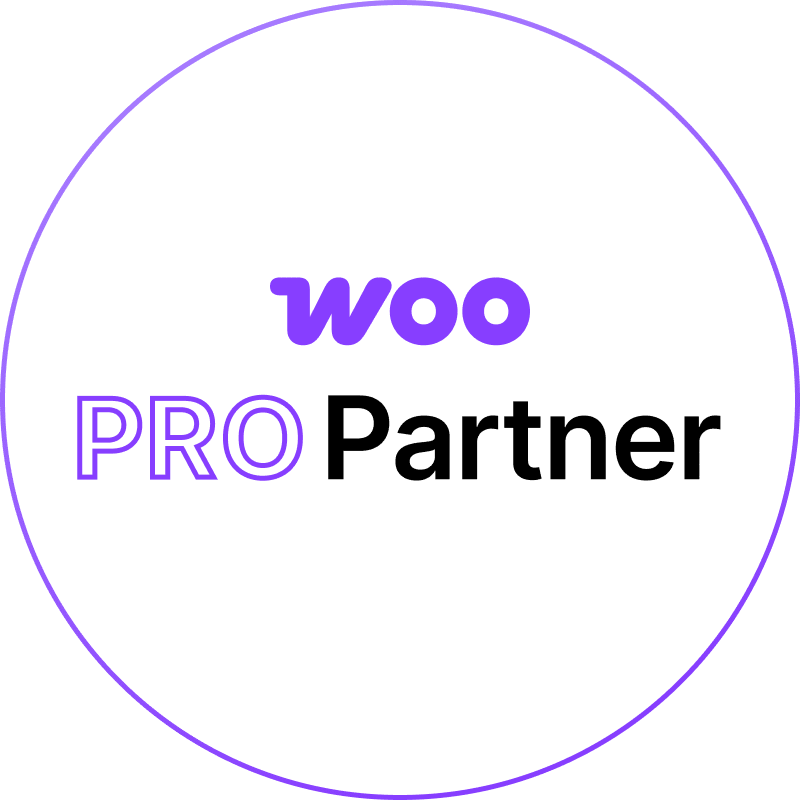E-Commerce PPC Mistakes to Avoid in 2025
In the ever-evolving world of e-commerce, PPC (Pay-Per-Click) advertising remains a critical tool for driving sales and visibility. With millions of businesses vying for consumer attention, PPC campaigns allow e-commerce brands to connect directly with high-intent shoppers searching for specific products. However, the success of a PPC campaign doesn’t come automatically—it requires careful planning, execution, and optimization. One of the most significant challenges is avoiding common mistakes that can derail your campaigns and waste your advertising budget.
2025 brings new trends, technologies, and consumer behaviors that make it even more essential for e-commerce businesses to refine their PPC strategies. From mobile-first shopping to increasingly competitive markets, the margin for error has grown smaller. By identifying and steering clear of common pitfalls, you can maximize your return on investment and build campaigns that consistently deliver results.
In this guide, we’ll explore the top e-commerce PPC mistakes to avoid, starting with a lack of clear campaign goals, ignoring negative keywords, and overlooking mobile optimization. By addressing these areas, you’ll create campaigns that are cost-effective, targeted, and aligned with your business goals. For businesses looking to take their campaigns to the next level, professional PPC management services can help ensure every detail is executed flawlessly.
Failing to Define Clear Campaign Goals
One of the most common mistakes e-commerce businesses make with PPC advertising is launching campaigns without clearly defined goals. A campaign without specific objectives is like setting out on a road trip without a destination—you’re bound to waste time, resources, and effort. In PPC advertising, every decision you make, from targeting and bidding to ad copy and landing page design, should align with your goals.
Start by identifying what you want to achieve with your campaigns. For e-commerce businesses, common goals might include driving online sales, increasing website traffic, boosting brand awareness, or promoting specific products. Be as specific as possible. For instance, instead of saying “I want more sales,” set a measurable goal like “Increase sales of product X by 20% within three months.”
Clear goals also help you determine which metrics to track. If your goal is sales, focus on metrics like return on ad spend (ROAS), cost per conversion, and total revenue. If you’re aiming to increase website traffic, prioritize metrics like click-through rate (CTR) and cost per click (CPC). When you have clear objectives and know how to measure success, you can make data-driven decisions to optimize your campaigns.
Without defined goals, it’s easy to overspend on campaigns that don’t deliver meaningful results. For example, you might allocate too much budget to top-of-funnel traffic without a strategy for converting those visitors into buyers. By setting specific goals from the outset, you ensure your campaigns are designed to achieve tangible outcomes that align with your broader business objectives.
Ignoring Negative Keywords
Negative keywords are one of the most underutilized yet essential tools in PPC campaigns. Ignoring them is a costly mistake that can lead to wasted ad spend and irrelevant traffic. Negative keywords allow you to exclude specific search terms from triggering your ads, ensuring that your budget is focused only on the most relevant and valuable clicks.
For example, if you’re selling luxury handbags, you wouldn’t want your ads to appear for searches like “cheap handbags” or “handbag repair.” Without adding these terms as negative keywords, your ads could attract clicks from users who aren’t interested in your products, resulting in wasted spend and a lower return on investment.
To identify potential negative keywords, review your search terms report regularly. This report shows the actual queries that triggered your ads and can help you spot irrelevant or unqualified traffic. Adding these terms to your negative keyword list ensures your ads are shown only to users who are more likely to convert.
Ignoring negative keywords doesn’t just waste money—it can also hurt your campaign performance. When your ads appear for irrelevant searches, your click-through rate (CTR) drops, which can negatively impact your quality score. A lower quality score leads to higher costs per click and worse ad placements, compounding the issue over time.
By proactively managing your negative keyword list, you can reduce wasted spend, improve your quality score, and ensure your ads are reaching the right audience. It’s a simple but powerful way to optimize your PPC campaigns for better results.
Overlooking Mobile Optimization
In 2025, mobile shopping continues to dominate the e-commerce landscape, making mobile optimization a critical factor in PPC campaign success. Yet, many e-commerce businesses still neglect to optimize their ads and landing pages for mobile users, resulting in missed opportunities and wasted ad spend. With the majority of online shoppers using smartphones to browse and make purchases, failing to cater to mobile users can severely hinder your campaign performance.
The first step in mobile optimization is ensuring that your ads are tailored for mobile devices. Mobile users have limited screen space, so your ad copy needs to be concise, engaging, and to the point. Headlines should grab attention immediately, while descriptions should clearly convey the value of your product. Additionally, make use of ad extensions, such as click-to-call buttons and location extensions, which make it easier for mobile users to take action directly from your ad.
Equally important is the optimization of your landing pages. Mobile users expect fast-loading, easy-to-navigate pages that offer a seamless experience. Slow-loading pages or confusing layouts lead to high bounce rates and lost conversions. Use tools like Google’s Mobile-Friendly Test to evaluate your site’s mobile performance and make necessary adjustments, such as compressing images, simplifying navigation, and reducing the number of form fields required for checkout.
Finally, consider mobile shopping behavior when designing your campaigns. For example, many mobile users research products before purchasing, so including trust signals like customer reviews, security badges, and easy return policies can help build confidence and drive conversions. By prioritizing mobile optimization, you ensure your PPC campaigns meet the expectations of today’s mobile-first shoppers.
Neglecting Product Feed Optimization
For e-commerce businesses running Google Shopping Ads, the product feed is the backbone of your campaigns. A poorly optimized product feed can lead to low ad performance, wasted budget, and missed opportunities to showcase your products effectively. Neglecting to maintain and optimize your product feed is one of the most common mistakes that e-commerce businesses make.
Your product feed is essentially the data source that Google uses to display your products in Shopping Ads. This includes attributes like product titles, descriptions, images, prices, and availability. If this information is incomplete, inaccurate, or poorly formatted, your ads won’t perform as well as they could.
Start by crafting detailed and keyword-rich product titles. These titles should include the most important information about the product, such as the brand, model, size, color, and other relevant details. For example, instead of “Running Shoes,” use “Nike Men’s Air Zoom Pegasus 39 Running Shoes – Black, Size 10.” Descriptive, optimized titles help your ads appear in relevant searches and attract the right audience.
Images are another critical element of your product feed. High-quality, clear images that showcase your product from multiple angles can significantly impact click-through rates. Avoid using generic or low-resolution images, as they can make your products less appealing to potential buyers.
Additionally, ensure that your product descriptions are accurate, concise, and compelling. Highlight key features and benefits while using language that resonates with your target audience. Regularly update your feed to reflect changes in pricing, availability, or product specifications, as outdated information can result in disapproved ads or a poor user experience.
By keeping your product feed optimized and up to date, you can improve the performance of your Shopping Ads and ensure your products are displayed effectively to potential customers.
Mismanaging Bidding Strategies
Bidding strategies play a crucial role in the success of your PPC campaigns, yet they are often mismanaged, leading to overspending or underperforming ads. Whether you’re using manual bidding or automated bidding, it’s important to have a clear strategy in place and monitor its performance regularly.
One common mistake is relying entirely on manual bidding without understanding how to allocate your budget effectively. Manual bidding allows for greater control over individual keywords and ad groups, but it requires constant monitoring and adjustments to ensure your bids align with your campaign goals. For example, if you’re bidding too low, your ads may not appear in competitive auctions, limiting your visibility. On the other hand, bidding too high can quickly exhaust your budget without delivering meaningful results.
Automated bidding strategies, such as Target ROAS (Return on Ad Spend) or Maximize Conversions, can save time and improve efficiency, but they also come with risks. Many e-commerce businesses set up automated bidding without fully understanding how it works, leading to suboptimal performance. For instance, if your target ROAS is set unrealistically high, Google may struggle to find opportunities to meet your goal, resulting in missed impressions and clicks.
To avoid these pitfalls, start by clearly defining your bidding goals and choosing the strategy that aligns with your objectives. For example, if you’re focused on maximizing sales, consider using Target ROAS or Enhanced CPC (Cost-Per-Click). If your goal is to increase brand visibility, Maximize Clicks might be a better fit.
Regularly review your campaign performance and adjust your bids as needed. Monitor metrics like CPC, conversion rates, and impression share to identify opportunities for improvement. By managing your bidding strategies carefully, you can strike the right balance between cost and performance, ensuring your PPC campaigns deliver the results you need.
Targeting Too Broad of an Audience
One of the most common mistakes e-commerce businesses make with PPC campaigns is targeting an overly broad audience. While it might seem logical to cast a wide net to attract as many customers as possible, this approach often leads to wasted ad spend and low conversion rates. A lack of precision in audience targeting means your ads are shown to users who may not be interested in your products, resulting in irrelevant clicks and poor campaign performance.
The key to effective PPC campaigns is narrowing your audience to focus on users who are most likely to convert. Start by leveraging Google Ads’ audience segmentation features to create targeted campaigns based on user demographics, interests, and behaviors. For example, if your store sells high-end fitness equipment, you might target users who are fitness enthusiasts, aged 25-45, and have previously searched for exercise-related products.
Retargeting is another powerful tool to refine your audience. By showing ads to users who have already visited your website or engaged with your content, you can re-engage potential customers and guide them further down the sales funnel. For instance, if a user viewed a specific product but didn’t complete the purchase, you can serve them a dynamic ad featuring that product with a special offer or discount to encourage them to return and buy.
Additionally, lookalike audiences allow you to target users who share similar characteristics with your existing customers. This strategy can expand your reach while maintaining relevance, ensuring your ads are shown to people who are more likely to be interested in your products. Avoid the temptation to include overly generic keywords or target all users within a geographic area unless your campaign goals specifically warrant it.
By focusing your targeting efforts on well-defined audience segments, you’ll not only reduce wasted spend but also increase your chances of driving meaningful conversions.
Neglecting Ad Copy Testing
Ad copy is one of the most influential elements of your PPC campaigns, yet many e-commerce businesses fail to give it the attention it deserves. Neglecting to test and refine your ad copy can lead to underwhelming click-through rates (CTR) and missed opportunities to connect with your audience. Static, one-size-fits-all messaging is rarely effective, especially in a competitive e-commerce landscape where consumers are inundated with options.
A/B testing, or split testing, is an essential strategy for improving your ad copy. This involves creating multiple variations of your ads and testing them against each other to determine which version performs best. For instance, you might experiment with different headlines, descriptions, or calls to action (CTAs) to see what resonates most with your audience. One headline might focus on discounts (“Save 20% Today!”), while another highlights product benefits (“Premium Quality You Can Trust”).
In addition to testing different messaging angles, consider experimenting with emotional appeals versus practical ones. For example, an ad for winter jackets could emphasize emotional benefits like “Stay Warm and Stylish All Winter” or practical features like “Waterproof and Built to Last in Any Weather.” Testing these variations allows you to identify which tone drives higher engagement and conversions.
Regularly refreshing your ad copy ensures that your messaging remains relevant and engaging, especially during seasonal campaigns or product launches. Keep a close eye on metrics like CTR, conversion rates, and quality scores to evaluate the impact of your copy changes. By investing time in ad copy testing, you’ll create ads that are more compelling and effective at driving results.
Failing to Track and Analyze Performance
One of the biggest mistakes in PPC advertising is running campaigns without proper tracking and analysis. Without clear insights into how your ads are performing, you’re essentially flying blind, unable to identify what’s working and what needs improvement. This oversight can result in wasted ad spend and missed opportunities to optimize your campaigns.
Tracking starts with setting up conversion tracking in Google Ads to monitor specific actions, such as purchases, form submissions, or add-to-cart events. This data helps you measure the success of your campaigns and understand how users interact with your ads and website. Additionally, integrating Google Analytics allows you to gain deeper insights into user behavior, such as time spent on site, bounce rates, and multi-channel attribution.
Focus on key performance indicators (KPIs) that align with your campaign goals. For e-commerce businesses, metrics like return on ad spend (ROAS), cost per conversion, click-through rate (CTR), and average order value (AOV) are critical to evaluating success. If a particular campaign or ad group isn’t delivering the desired results, analyze the data to determine why. It could be due to irrelevant targeting, low-quality keywords, or an ineffective landing page.
Regularly reviewing performance reports also enables you to spot trends and make data-driven adjustments. For instance, you might discover that certain keywords perform better on mobile devices or that a specific time of day generates more conversions. Use these insights to refine your bidding strategies, targeting parameters, and ad schedules to maximize ROI.
By prioritizing tracking and analysis, you’ll gain the clarity needed to fine-tune your campaigns and ensure your PPC budget is being spent wisely.
Overlooking Seasonal and Trend-Based Adjustments
Seasonal and trend-based adjustments are essential for staying competitive in e-commerce PPC campaigns, yet they’re often overlooked. Consumer behavior fluctuates throughout the year, driven by holidays, seasonal needs, and viral trends. Ignoring these shifts can result in missed opportunities to capitalize on high-demand periods and products.
For example, during the holiday season, shoppers are actively looking for deals and gift ideas, making it an ideal time to ramp up your ad spend and promote holiday-specific offers. Similarly, back-to-school season or summer sales present opportunities to tailor your campaigns to seasonal demand. If your product offerings are tied to specific seasons or events, failing to adjust your strategy means you’re leaving money on the table.
In addition to seasonality, keep an eye on market trends and consumer preferences. For instance, if a particular product category becomes popular due to a social media trend or cultural event, create timely campaigns to capture interest. Dynamic keyword insertion can help tailor your ads to trending searches, ensuring your messaging aligns with what consumers are actively looking for.
Stay agile by monitoring performance during seasonal campaigns and adjusting your budget, targeting, and ad copy as needed. Use historical data from previous years to anticipate demand spikes and plan your strategy accordingly. By aligning your PPC campaigns with seasonal and trend-based shifts, you’ll ensure your ads remain relevant and drive consistent results.Ready to take your PPC campaigns to the next level? Contact Zen Agency today to discover how our expert PPC management services can help you drive targeted traffic, increase conversions, and maximize your ROI. Let’s turn your digital ads into measurable success!

















